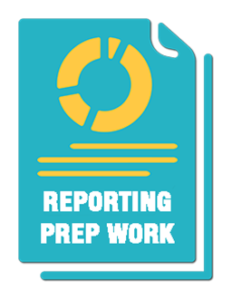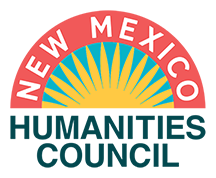AUDIENCE ENGAGEMENT, ATTENDANCE AND PROACTIVE MARKETING
Grant funded events and activities should offer opportunities for audience engagement with scholars by facilitating a question-and-answer session. Funded projects should aim to involve and address out-of-school adults and families as the primary audience. All events must be free or low cost, and open to the general public. Marketing efforts should be directed towards maximizing attendance by members of the general public.
- COLLEGES AND UNIVERSITIES: NMHC accepts applications from colleges and universities that demonstrate a commitment to reaching an audience beyond the campus community. Applications should show community collaboration, a well-defined outreach and marketing plan.
- TRIBAL ORGANIZATIONS: NMHC’s grant program does have special allowances for defining a “public audience” for humanities programming that is led by tribal groups. Events are not required to include the larger general public, and alternatively can define the “public audience” as those within sovereign nations, pueblos or other Indigenous communities.
Preference will be given to projects with outreach focused on new and/or historically underserved communities, and programs that reach underserved geographic areas. However, it is important that applicants demonstrate a tangible plan to directly engage these audiences. NMHC’s application evaluation questions specifically seek to determine if a proposal has a concrete plan or if the applicant appears to be merely incorporating key phrases or making generalized statements. NOTE: The final reports also incorporate questions that seek to confirm how an organization has followed through with serving the target audiences listed in the application.
Below are more specifics about the types of marketing intended to engage audiences, and how to relate these components back to budgeted items.
![]() KEEP A LOW RISK ASSESSMENT SCORE
KEEP A LOW RISK ASSESSMENT SCORE
Do you have a proactive or a passive marketing plan for your project? Did you know applicants with a passive marketing plan are considered a higher risk? Build a marketing plan that has a higher chance of increasing attendance and reaching new audiences. Take a look at these examples below to learn more.
NOTE: It’s important to show tangible evidence of pre-event marketing in a grant application’s budget. Applicants are highly encouraged to request grant funds to support pre-event marketing. However, all grant-based marketing dollars must be applied to advertisements intended for public audiences within New Mexico.
A proactive marketing plan may include (but is not limited to) the mass distribution of content through:
● paid advertisement of some kind that reaches the general public;
● having event content on your organization’s website 60 days in advance with registration available on your website at least 30 days in advance;
● the distribution of marketing materials no later than 60 days before the event date;
● posts on social media are on a page owned by your organization (rather than solely relying on partner organizations’ doing cross-promotion) and then increase the reach of these posts with a strategic plan. Ensure more people see your posts with paid ads and/or by sharing event posts to Facebook groups aka “chat rooms;”
● implementing a strategic plan that continuously grows social media followers to reach more members of the general public;
● distribution of flyers in high traffic areas to reach the general public;
● posting to online public event calendars.
Passive marketing practices include:
● starting the promotion of an event 30 days or less before the event;
● the distribution of event announcements through a pre-established email list;
● heavily relying on traffic to your website;
● heavily relying on marketing initiatives from venues;
● heavily relying on marketing efforts being done by partners;
●heavily relying on the expectation of interviews, free ads in publications, or free news coverage from press releases;
● primarily budgeting for marketing staff to promote content through the organization’s established channels, rather than also establishing a marketing budget for paid ads distributed in public publications.
 FINAL REPORT PREP
FINAL REPORT PREP
Subrecipients will be expected to report their marketing initiatives within the final report. Samples of marketing materials will be encouraged.
TIP: MAKE YOUR APPLICATION MORE COMPETITIVE
Move free in-kind marketing provided by partners from the “passive marketing” column to the “proactive” marketing column by providing letters of commitment. Providing these letters of commitment will also make the application more competitive.
- EXAMPLE A: “I, Jane Sparrow, confirm my organization, Tapestries of Time, is committed to promoting public events related to this program. We will do so by sharing pre-event promotions to our contacts on our organization’s social media.”
- EXAMPLE B: “I, Erin Smith, confirm my radio station KMQE 98.1 is committed to promoting public events related to this project. We will do so by providing 20 in-kind radio ads valued at a total of $1,200.00. These marketing efforts will take place before each event takes place.”
- EXAMPLE C: “The team here at the Burque Community Center will be hosting two events that are part of this project. As the venue, we will promote these events through our established channels.”
NOTE: The application has a button to upload one PDF in this section. So please combine all commitment letters into one file. Commitment letters do not have to be formal. They can be something as simple as an emailed statement saved as a PDF.
All grant final application submissions and subaward grant reports are managed through the Foundant Grants Management Portal. If you are ready to schedule a consultation meeting or have questions along the way please reach out to NMHC’s grants management team. Check out our staff directory for contact information.
